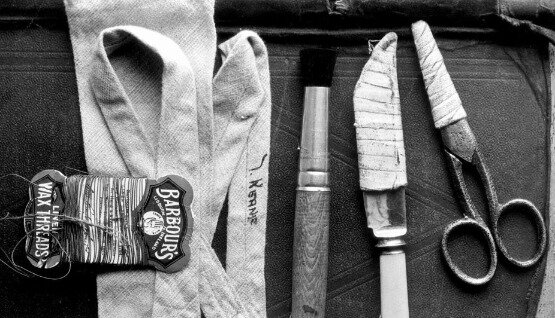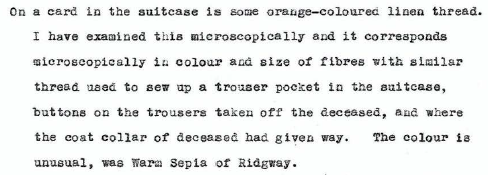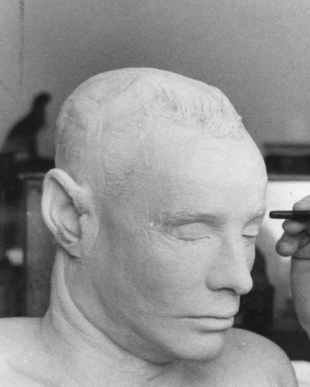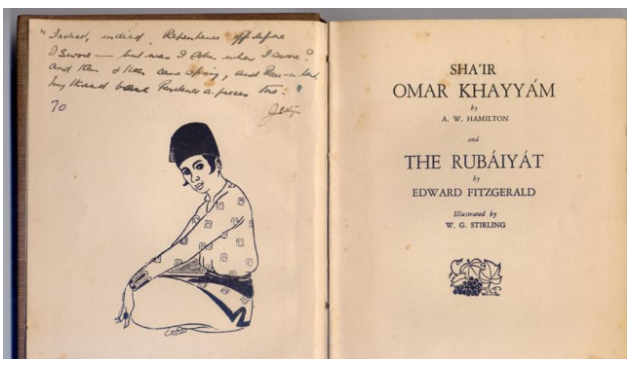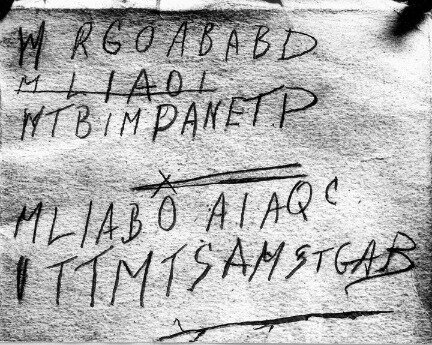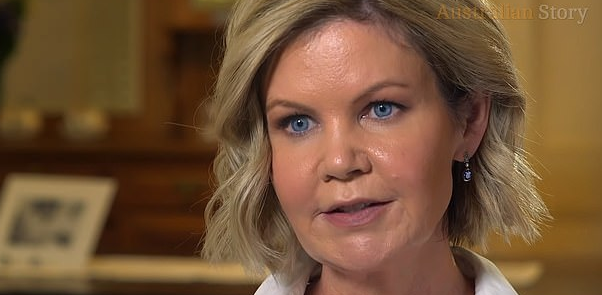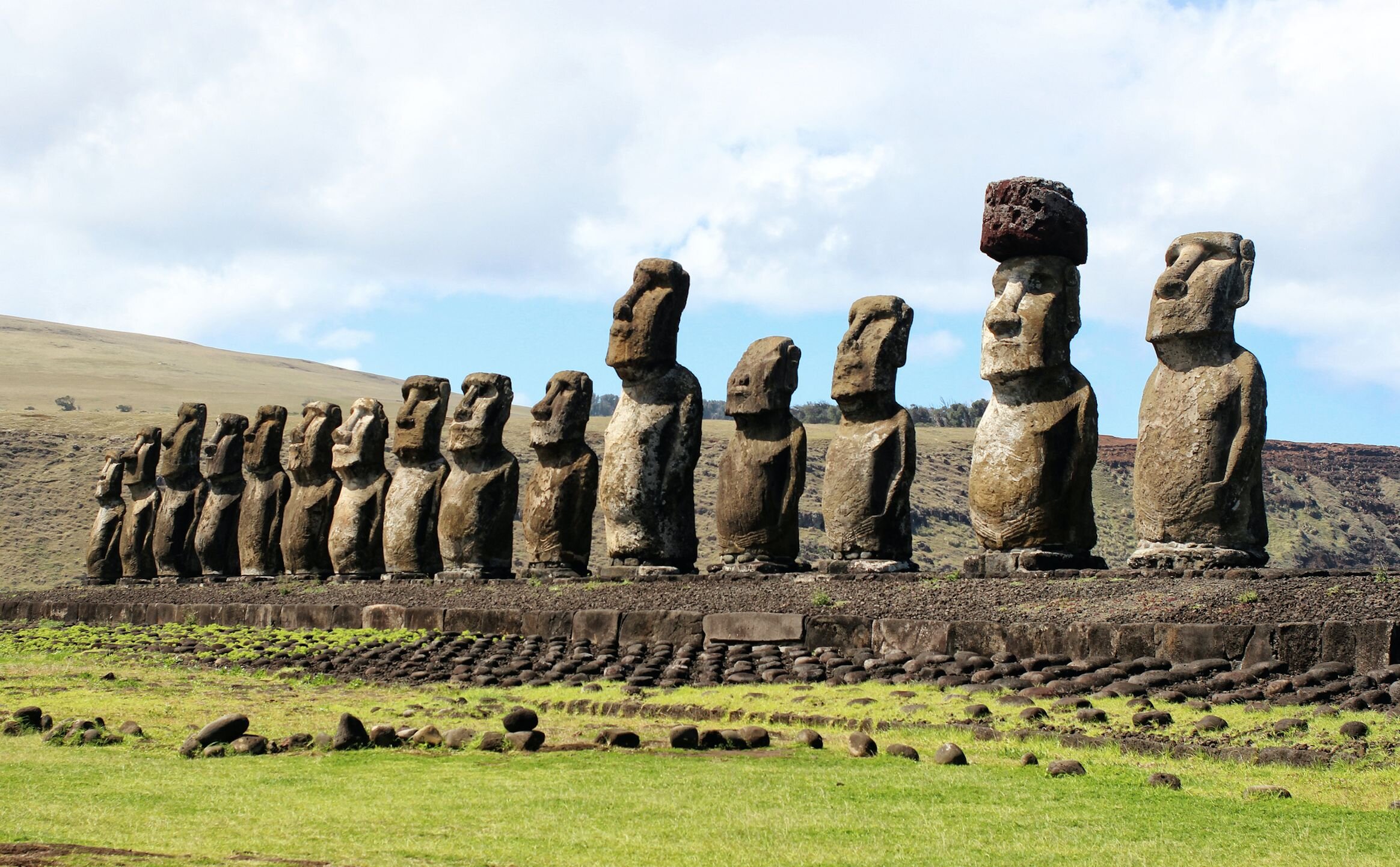
Historical Strangeness
The most mysterious outdoor stories from history
The strange mystery of the Somerton Man (Tamám Shud case)
Updated August 2022
The “Mystery of the Somerton Man”, also known as the “Tamám Shud case”, was, for over seven decades, an unsolved story of an unidentified man found dead at 6.30 am on December 1, 1948, on the Somerton Park beach, 6.8 miles (11 km) southwest of Adelaide, South Australia.
The case was considered one of Australia's biggest mysteries. Despite thousands of hours of investigation by the authorities and internet sleuths, the identity of the Somerton Man remained unknown.
The remains of the man were exhumed in May 2021 for DNA analysis and then finally, in July 2022, the mystery of the Somerton Man’s identity was claimed to have been solved. He was named Carl “Charles” Webb, a 43-year-old electrical engineer and instrument maker from Melbourne in Australia by Derek Abbott, from the University of Adelaide, using DNA sequencing and genealogy.
Discovery of the Somerton Man
On December 1, 1948, at 6.30 am, the police were contacted after the body of a man was discovered on Somerton beach near Glenelg by two trainee jockeys.
The body was lying by the sea wall about across from the Crippled Children's Home, which was on the corner of The Esplanade and Bickford Terrace. The body’s head was resting against the seawall, with legs extended and feet crossed.
Neil Day initially went over to see if the man was alright and got fairly close to him and couldn't see him breathing and then Day’s friend took hold of the man's leg to see if they could wake him, but they quickly realized he was dead.
The dead man on the beach was dressed in a white shirt, a red, white and blue tie, brown trousers, socks and shoes, a brown knitted pullover and a fashionable grey and brown double-breasted jacket of "American" tailoring.
Strangely, all the labels on his clothes had been removed, and he had no hat or wallet. He was clean-shaven and carried no identification.
A search of the man’s clothes revealed an unused second-class rail ticket from Adelaide to Henley Beach, a bus ticket to St. Leonards at 11.15 am, a US-manufactured, narrow aluminum comb, a half-empty packet of Juicy Fruit chewing gum, an Army Club cigarette packet, which contained seven cigarettes of a different brand, Kensitas, and a quarter-full box of Bryant & May matches.
A stranger arriving in Adelaide by morning train (e.g.Melbourne Express) might look for a seaside destination where he could lie down without attracting attention. If for some reason after buying his ticket he missed his train, he might ask someone how to get to the seaside and be told that St. Leonard’s bus stop was opposite the station. The 11.15 would be the next bus.
Witnesses said that on the evening of November 30, they had seen an individual resembling the dead man lying on his back near the Crippled Children's Home, where the corpse was later found.
A couple who saw him at around 7 pm noted that he had extended his right arm to its fullest extent and then it had dropped limply. Another couple who saw him from 7.30-8 pm, said that they did not see him move during the half an hour in which he was in view, although they believed his position had changed on the beach. They had mentioned between themselves that it was odd he was not reacting to the mosquitoes and thought that perhaps he was drunk or asleep. One of the witnesses told the police she observed a man looking down at the sleeping man from the top of the steps that led to the beach.
The Post Mortem and Autopsy report
According to the pathologist, John Burton Cleland, the time of death was estimated at around 2 am, on December 1, 1948. Somerton police officers found the body rigid and cold and death was declared at the Royal Adelaide Hospital at 7.45 am. Lumps of potato in the stomach contents suggested death before digestion was complete.
He was of white, European appearance and thought to be aged about 40–45 years. He was in "top physical condition", but was a heavy smoker. He was 5 ft 11 inches tall (180 cm), with grey eyes, fair to ginger-colored hair, and slightly grey around the temples.
His hands and nails showed no signs of manual labor, with pronounced high calf muscles consistent with people who regularly wore boots or shoes with high heels or performed ballet.
The postmortem showed no lesions likely to cause natural death such as coronary disease or cerebral hemorrhage. The heart was normal, but the brain showed damage. There was congestion of the pharynx, and the esophagus (gullet) was covered with whitening of superficial layers of the mucosa with a patch of ulceration in the middle of it. The stomach was deeply congested as was the small intestine, blood mixed with the food in the stomach.
Both kidneys were congested, the liver contained excess blood and the spleen was about three times its normal size. There was the destruction of the center of the liver lobules revealed under the microscope.
The man's last meal was a pasty (pastry wrapping meat and potatoes) eaten three to four hours before death. There was no evidence of any commonly tested poison or other foreign substance in the body, but the pathologists were convinced a drug was involved. Although poisoning remained a prime suspect, the pasty was not believed to be the source of the poison.
The pathologist concluded, "I am quite convinced the death could not have been natural ... the poison I suggested was a barbiturate or a soluble hypnotic".
The body was then embalmed on December 10, 1948, after the police were unable to get a positive identification.
The full pathologist’s report was released to the public in 2019 and can be read here:
The suitcase
Contents of suitcase of Adelaide railway station
On January 14, 1949, the staff at the Adelaide railway station discovered a brown suitcase with its label removed, which had been checked into the station cloakroom after 11.00 am on November 30, 1948. It was suspected that the suitcase was owned by the man found on the beach on December 1.
In the case were a red checked dressing gown, a size-seven, red felt pair of slippers, four pairs of underpants, pyjamas, shaving items, light brown pair of trousers with sand in the cuffs, an electrician's screwdriver, a table knife cut down into a short sharp instrument, a pair of scissors with sharpened points, a small square of zinc thought to have been used as a protective sheath for the knife and scissors. and a stenciling brush, as used on merchant ships for marking cargo. Unusually, there were no spare socks.
There were airmail stickers in the case indicating the owner was in correspondence with someone overseas.
The suitcase also contained a thread card of Warm Sepia of Ridgway thread which was an unusual color, not available in Australia. It was the same as that used to repair the lining in a pocket of the trousers the dead man was wearing.
All identification marks on the clothes had been removed, but police found the name "T. Keane" on a tie, "Keane" on a laundry bag, and "Kean" (without the last e) on a singlet, along with three dry-cleaning marks; 1171/7, 4393/7 and 3053/7. Police believed that whoever removed the clothing tags either overlooked these three items or purposely left the "Keane" tags on the clothes, knowing Keane was not the dead man's name. With wartime rationing still in place, clothing was difficult to acquire at that time. Although it was a very common practice to use name tags, it was also normal when buying secondhand clothing to remove the tags of the previous owner.
A search concluded that there was no T. Keane missing in any English-speaking country and a nationwide circulation of the dry-cleaning marks also proved fruitless. In fact, all that could be garnered from the suitcase was that the front gusset and featherstitching on a coat found in the case indicated it had been manufactured in the United States. The coat had not been imported, indicating the man had been to the United States or bought the coat from someone of similar size who had been.
Police checked incoming train records and believed the man had arrived at the Adelaide railway station by overnight train from either Melbourne, Sydney, or Port Augusta.
They believed he had showered and shaved at the adjacent City Baths (there was no Baths ticket on his body) before returning to the train station to purchase a ticket for the 10.50 am train to Henley Beach, which, for whatever reason, he missed.
Although named "City Baths", the center was not a public bathing facility but a public swimming pool. The railway station bathing facilities were next to the station cloakroom, which itself was adjacent to the station's southern exit onto North Terrace. The City Baths on King William St. were accessed from the station's northern exit via a lane. There is no record of the station's bathroom facilities being unavailable on the day he arrived.
He immediately checked his suitcase at the station cloakroom before leaving the station and catching a city bus to Glenelg.
Inquest into the Somerton man
An inquest into the death, conducted by coroner Thomas Erskine Cleland, started a few days after the body was found but was adjourned until June 17, 1949. The investigating pathologist John Burton Cleland re-examined the body and made a number of discoveries. Cleland noted that the man's shoes were remarkably clean and appeared to have been recently polished, rather than being in the state expected of the shoes of a man who had apparently been wandering around Glenelg all day. He added that this evidence fitted in with the theory that the body might have been brought to Somerton beach after the man's death, accounting for the lack of evidence of vomiting and convulsions, which are the two main physiological reactions to poison.
Cleland speculated that since none of the witnesses could positively identify the man they saw the previous night as being the same person discovered the next morning, there remained the possibility the man had died elsewhere and had been dumped. He stressed that this was purely speculation as all the witnesses believed it was "definitely the same person" as the body was in the same place and lying in the same distinctive position.
Early in the inquiry, Cleland stated "I would be prepared to find that he died from poison, that the poison was probably a glucoside and that it was not accidentally administered; but I cannot say whether it was administered by the deceased himself or by some other person." Despite these findings, he could not determine the cause of death of the Somerton Man. Cleland remarked that if the body had been carried to its final resting place then "all the difficulties would disappear".
Cedric Stanton Hicks, Professor of physiology and pharmacology at the University of Adelaide, testified that of a group of drugs, variants of a drug in that group he called "number 1" and in particular "number 2" were extremely toxic in a relatively small oral dose that would be extremely difficult if not impossible to identify even if it had been suspected in the first instance. He gave the coroner a piece of paper with the names of the two drugs which were entered as Exhibit C.18. The names were not released to the public until the 1980s as at the time they were "quite easily procurable by the ordinary individual" from a pharmacy without the need to give a reason for the purchase. The drugs were later publicly identified as digitalis and ouabain, both of which are cardenolide-type cardiac glycosides.
Hicks stated that if death had occurred seven hours after the man was last seen to move, it would imply a massive dose that could still have been undetectable. It was noted that the movement seen by witnesses at 7 pm could have been the last convulsion preceding death.
After the inquest, a plaster cast was made of the man's head and shoulders.
The South Australian Police Historical Society holds the bust, which contains strands of the man's hair. Any further attempts to identify the body have been hampered by the embalming formaldehyde having destroyed much of the man's DNA. Other key evidence no longer exists, such as the brown suitcase, which was destroyed in 1986.
Connection to the Rubaiyat of Omar Khayyam
Around the same time as the inquest, a piece of rolled-up paper with the words "Tamám Shud" printed on it was found in a fob pocket sewn within the dead man's trouser pocket.
Public library officials called in to translate the text identified it as a phrase meaning "ended" or "finished" found on the last page of the Rubaiyat of Omar Khayyam. The paper's other side was blank. Police conducted an Australia-wide search to find a copy of the book.
Following a public appeal by police, the copy of the Rubaiyat from which the page had been torn was located. A man showed police a 1941 edition of Edward FitzGerald's (1859) translation of the Rubaiyat, published by Whitcombe and Tombs in Christchurch, New Zealand.
Detective Sergeant Lionel Leane, who led the initial investigation, often protected the privacy of witnesses in public statements by using pseudonyms. Leane referred to the man who found the book by the pseudonym "Ronald Francis" and he has never been officially identified. "Francis" had not considered that the book might be connected to the case until he had seen an article in the previous day's newspaper.
Former South Australian Police detective Gerry Feltus (who dealt with the matter as a cold case), reports that the book was found "just after that man was found on the beach at Somerton". The timing is significant as the man is presumed, based on the suitcase, to have arrived in Adelaide the day before he was found on the beach. If the book was found one or two weeks before, it suggests that the man had visited previously or had been in Adelaide for a longer period. Most accounts state that the book was found in an unlocked car parked in Jetty Road, Glenelg, either on the rear floor well, or on the back seat.
The theme of the Rubaiyat of Omar Khayyam is that one should live life to the fullest and have no regrets when it ends. The poem's subject led police to theorize that the man had committed suicide by poison. The book was missing the words "Tamám Shud" on the last page, which had a blank reverse, and microscopic tests indicated that the piece of paper was from the page torn from the book. The back of the book had faint indentations representing five lines of text, in capital letters. The second line has been struck out, the fact that is considered significant, due to its similarities to the fourth line and the possibility that it represents an error in encryption.
In the book, it is unclear whether the first line begins with an "M" or "W", but it is widely believed to be the letter W. There appears to be a deleted or underlined line of text that reads "MLIAOI". Although the last character in this line of text looks like an "L", it is fairly clear on closer inspection of the image that this is formed from an 'I' and the extension of the line used to delete or underline that line of text. Also, the other "L" has a curve to the bottom part of the character. There is also an "X" above the last “O” in the code, and it is not known if this is significant to the code or not.
Initially, the letters were thought to be words in a foreign language before it was realized it was a code. Code experts were called in at the time to decipher the lines, but were unsuccessful.
In 1978, following a request from ABC-TV journalist Stuart Littlemore, Department of Defence cryptographers analyzed the handwritten text. The cryptographers reported that it would be impossible to provide "a satisfactory answer": if the text were an encrypted message, its brevity meant that it had "insufficient symbols" from which a clear meaning could be extracted, and the text could be the "meaningless" product of a "disturbed mind".
A telephone number was also found in the back of the book, belonging to a nurse named Jessica Ellen "Jo" Thomson (1921–2007), born Jessie Harkness in the Sydney suburb of Marrickville, who lived in Moseley Street, Glenelg, about 1300 ft (400 meters) north of the location where the body was found.
When Miss Thomson was interviewed by police, she said that she did not know the dead man or why he would have her phone number and choose to visit her suburb on the night of his death. However, she also reported that, at some time in late 1948, an unidentified man had attempted to visit her and asked a next-door neighbor about her.
In his book on the case, Gerry Feltus stated that when he interviewed Thomson in 2002, he found that she was either being "evasive" or she "just did not wish to talk about it". Feltus believed Thomson knew the Somerton man's identity. Thomson's daughter Kate, in a television interview in 2014 with 60 Minutes, also said that she believed her mother knew the dead man.
In 1949, Thomson requested that the police not keep a permanent record of her name or release her details to third parties, as it would be embarrassing and harmful to her reputation to be linked to such a case. The police agreed and this was a decision that hampered later investigations.
In news media, books, and other discussions of the case, Thomson was frequently referred to by various pseudonyms, including the nickname "Jestyn" and names such as "Teresa Johnson née Powell".
Gerry Feltus claimed he was given permission by Thomson's family to disclose her names and that of her husband, Prosper Thomson. Nevertheless, the names Feltus used in his book were pseudonyms. Feltus also stated that her family did not know of her connection with the case, and he agreed not to disclose her identity or anything that might reveal it. Her real name was considered important as the possibility exists that it may be the decryption key for the purported code.
When she was shown the plaster cast bust of the dead man by Detective Sergeant Leane, Thomson said she could not identify the person depicted. According to Leane, he described her reaction upon seeing the cast as "completely taken aback, to the point of giving the appearance that she was about to faint". In an interview many years later, Paul Lawson, the technician who made the cast and was present when Thomson viewed it, said that after looking at the bust she immediately looked away and would not look at it again.
Thomson also said that whilst she was working at Royal North Shore Hospital in Sydney during World War II, she had owned a copy of the Rubaiyat. In 1945, at the Clifton Gardens Hotel in Sydney, she had given it to an army lieutenant named Alf Boxall, who was serving at the time in the Water Transport Section of the Royal Australian Engineers. Thomson told police that, after the war ended, she had moved to Melbourne and married. She said that she had received a letter from Boxall and had replied, telling him that she was now married. It was thought that her future husband, Prosper Thomson, was in the process of obtaining a divorce from his first wife in 1949 and that he did not marry Jessica Harkness until mid-1950. There is no evidence that Boxall had any contact with Harkness after 1945.
As a result of their interviews with Thomson, police suspected that Boxall was the dead man. However, in July 1949, he was found in Sydney and the final page of his copy of the Rubaiyat (reportedly a 1924 edition published in Sydney) was intact, with the words "Tamam Shud" still in place. Boxall was now working in the maintenance section at the Randwick Bus Depot, where he had worked before the war and was unaware of any link between the dead man and himself in the front of the copy of the Rubaiyat that was given to Boxall.
Theories on the identity of the Somerton Man
There has been persistent speculation that the dead man was a spy, due to the circumstances and historical context of his death.
At least two sites relatively close to Adelaide were of interest to spies: the Radium Hill uranium mine and the Woomera Test Range, an Anglo-Australian military research facility.
The man's death coincided with a reorganization of Australian security agencies, which would culminate the following year with the founding of the Australian Security Intelligence Organisation (ASIO). This would be followed by a crackdown on Soviet espionage in Australia, which was revealed by intercepts of Soviet communications under the Venona project.
Another theory concerns Alf Boxall, who was reportedly involved in intelligence work during and immediately after World War II. In a 1978 television interview Stuart Littlemore asks: "Mr. Boxall, you had been working, hadn't you, in an intelligence unit, before you met this young woman [Jessica Harkness]. Did you talk to her about that at all?" In reply, Boxall says "no", and when asked if Harkness could have known, Boxall replies "not unless somebody else told her." When Littlemore suggests in the interview that there may have been an espionage connection to the dead man in Adelaide, Boxall replies: "It's quite a melodramatic thesis, isn't it?" Boxall's army service record suggests that he served initially in the 4th Water Transport Company, before being seconded to the North Australia Observer Unit (NAOU) – a special operations unit – and that during his time with NAOU, Boxall rose rapidly in rank, being promoted from Lance Corporal to Lieutenant within three months.
Subsequent events
The burial of the Somerton Man’s body occurred on June 14, 1949, in Adelaide's West Terrace Cemetery. The South Australian Grandstand Bookmakers Association paid for the service to save the man from a pauper's burial.
Years after the burial, flowers began appearing on the grave. Police questioned a woman seen leaving the cemetery but she claimed she knew nothing of the man.
At about the same time, Ina Harvey, the receptionist from the Strathmore Hotel opposite Adelaide railway station, revealed that a strange man had stayed in Room 21 or 23 for a few days around the time of the death, checking out on November 30, 1948. She recalled that he was English speaking and only carrying a small black case, not unlike one a musician or a doctor might carry. When an employee looked inside the case he told Harvey he had found an object inside the case he described as looking like a “needle”.
In 2004, retired detective Gerry Feltus suggested in a Sunday Mail article that the final line "ITTMTSAMSTGAB" could stand for the initials of "It's Time To Move To South Australia Moseley Street..." (the former nurse lived in Moseley Street which is the main road through Glenelg)
A 2014 analysis by computational linguist John Rehling suggested that the letters consist of the initials of some English text, but finds no match for these in a large survey of the literature, and concludes that the letters were likely written as a form of shorthand, not as a code and that the original text can likely never be determined.
The Australian Broadcasting Corporation, in its documentary series Inside Story, shown in 1978, produced a program on the case, entitled “The Somerton Beach Mystery”. Reporter Stuart Littlemore investigated the case, including interviewing Boxall, who could add no new information.
In 1994, John Harber Phillips, Chief Justice of Victoria and Chairman of the Victorian Institute of Forensic Medicine, reviewed the case to determine the cause of death and concluded that "There seems little doubt it was digitalis." Phillips supported his conclusion by pointing out that the organs were engorged, consistent with digitalis, the lack of evidence of natural disease, and "the absence of anything seen macroscopically which could account for the death".
Former South Australian Chief Superintendent Len Brown, who worked on the case in the 1940s, stated that he believed that the man was from a country in the Warsaw Pact, which led to the police's inability to confirm the man's identity.
Reported identifications
By early February 1949, there had been eight different "positive" identifications of the body, including two Darwin men who thought the body was of a friend of theirs and others who thought it was a missing station worker, a worker on a steamship, or a Swedish man.
A seaman by the name of Tommy Reade from the SS Cycle, in port at the time, was thought to be the dead man, but after some of his shipmates viewed the body at the morgue, they stated categorically that the corpse was not that of Tommy Reade.
By November 1953, police announced they had recently received the 251st "solution" to the identity of the body from members of the public who claimed to have met or known him. But, they said that the "only clue of any value" remained the clothing.
In March 2009 a University of Adelaide team led by Professor Derek Abbott began an attempt to solve the case by cracking the code and proposing to exhume the body to test for DNA. His investigations led to many questions concerning the assumptions police had made on the case.
In May 2009, Abbott consulted with dental experts who concluded that the Somerton Man had hypodontia (a rare genetic disorder) of both lateral incisors, a feature present in only 2% of the general population.
In June 2010, Abbott obtained a photograph of Jessica Thomson's eldest son Robin, which clearly showed that he, like the unknown man, had not only a larger cymba than cavum but also hypodontia. The chance that this was a coincidence has been estimated as between one in 10-20 million.
The media have suggested that Robin Thomson, who was 16 months old in 1948 and died in 2009, may have been a child of either Alf Boxall or the Somerton Man and passed off as Prosper Thomson's son.
In 2011, an Adelaide woman contacted a biological anthropologist and professor of anatomy at the University of Adelaide Maciej Henneberg about an identification card of an H. C. Reynolds that she had found in her father's possessions. The card, a document issued in the United States to foreign seamen during World War I, was given to Henneberg in October 2011 for comparison of the ID photograph to that of the Somerton man.
While Henneberg found anatomical similarities in features such as the nose, lips, and eyes, he believed they were not as reliable as the close similarity of the ear. The ear shapes shared by both men were a "very good" match - his cymba (upper ear hollow) was larger than his cavum (lower ear hollow), a feature possessed by only 1–2% of the Caucasian population. Henneberg also found what he called a "unique identifier”, a mole on the cheek that was the same shape and in the same position in both photographs. "Together with the similarity of the ear characteristics, this mole, in a forensic case, would allow me to make a rare statement positively identifying the Somerton man."
The ID card, numbered 58757, was issued in the United States on 28 February 1918 to H.C. Reynolds, giving his nationality as "British" and age as 18. Searches conducted by the US National Archives, the UK National Archives and the Australian War Memorial Research Centre have failed to find any records relating to H.C. Reynolds.
In July 2013, Abbott released an artistic impression he commissioned of the Somerton man, believing this might finally lead to an identification. "All this time we've been publishing the autopsy photo, and it's hard to tell what something looks like from that", Abbott said.
In December 2017, Abbott announced three "excellent" hairs "at the right development stage for extracting DNA" had been found on the plaster cast of the corpse, and had been submitted for analysis to the Australian Centre for Ancient DNA at the University of Adelaide. Processing the results could reportedly take up to a year. In February 2018, the University of Adelaide team obtained a high-definition analysis of the mitochondrial DNA from the hair sample from Somerton Man. They found that he and his mother belonged to haplogroup H4a1a1a, which is possessed by only 1% of Europeans.
In November 2013 relatives of "Jestyn" gave interviews to the television current affairs program 60 Minutes. Kate Thomson, the daughter of Jessica and Prosper Thomson, said that her mother was the woman interviewed by the police and that her mother had told her she had lied to them. Jessica did know the identity of the "Somerton Man" and his identity was also "known to a level higher than the police force". Her father had died in 1995 and her mother had died in 2007. Kate Thomson suggested that her mother and the "Somerton Man" may both have been spies, noting that Jessica Thomson taught English to migrants, was interested in communism, and could speak Russian, although she would not disclose to her daughter where she had learned it, or why.
Robin Thomson's widow, Roma Egan, and their daughter Rachel Egan, also appeared on 60 Minutes suggesting that the Somerton Man was Robin Thomson's father and, therefore, Rachel's grandfather. The Egans reported lodging a new application with the Attorney-General of South Australia, John Rau, to have the Somerton Man's body exhumed and DNA tested. Derek Abbott also subsequently wrote to Rau in support of the Egans, saying that exhumation for DNA testing would be consistent with federal government policy of identifying soldiers in war graves, to bring closure to their families. Kate Thomson opposed the exhumation as being disrespectful to her brother
Attempts to exhume the body
In October 2019, the South Australian Attorney-General, Vickie Chapman, signed off for the Somerton man’s body to be exhumed by the University of Adelaide Professor Derek Abbott. Chapman has had an interest in the case since studying it in law school and she said, “It's a case of intrigue and mystery and so it's been on my agenda for over 40 years now. To exhume a body in South Australia, it needs the Attorney-General's approval for obvious reasons. And I'm quite happy to give my approval, provided the costs are met by those who apply.”
Abbott had been trying to solve the mystery for more than a decade. His research led him to his wife, Rachel Egan, who he believes is the Somerset Man's granddaughter. Rachel Egan has three young children with Professor Abbott.
Rachel talked of the time when she first met the professor, “He wanted to look at my ears and my teeth. He was also after my DNA. It's probably the first request I've had from a man to do that. People have said that possibly Derek married me for my DNA. And I think there is some truth to that.”
Abbott believes the Somerton Man's son is Robin Thomson, an American, who went on to perform with the Australian Ballet and Royal New Zealand Ballet before he died in 2009. The Somerton Man was thought to have fathered a child with a nurse called Jo “Jestyn” Thomson, Rachel Egan's grandmother. Thomson denied ever knowing the Somerton Man.
Robin's daughter, Rachel Egan
Exhumation of the body confirmed
In April 2021, it was confirmed that SA Police would exhume Somerton Man’s body in the hope that DNA samples would shed further light on who he was.
SA Police had an exhumation order approved by Attorney-General Vickie Chapman, who said the case had generated "intense public interest. This man could be someone's father, brother or cousin, and those relatives and friends deserve answers. South Australia Police has since come to me with the funding and an application, and I have approved it. It means that finally this case, which has been studied, investigated and followed for more than 70 years, will be re-examined, and, hopefully, many of questions surrounding his enigmatic life will be answered."
Detective Superintendent Des Bray, from SA Police's Major Crime Division, said that improvements in technology would give forensic experts the best chance yet "to possibly identify the man through his DNA. I won't speculate on how this man died, but there may also be potential to establish a definitive cause of death.
SA Police would work with Forensic Science SA scientific staff and the Adelaide Cemeteries Authority to carry out the exhumation and reinterment of the man's body.
While a date for the exhumation had not yet been determined as of April 2021, Forensic Science SA director Linzi Wilson-Wilde said it would likely be in the "short term", and that the remains would be transferred to a laboratory for analysis, "It's going to be extremely challenging in a technical sense — the remains have been buried for over 70 years and, in addition, the body was embalmed which adds further complications. The chemicals used in the embalming process can significantly break down any DNA present. It really is an unknown — we don't know what the state of the remains is going to be, we don't know the level of degradation."
Dr. Linzi Wilson-Wilde oversaw the DNA analysis, which was carried out at Forensic Science SA and hoped are that there will be enough DNA to allow researchers to compare the Somerton Man's profile with potential relatives. "Ideally, we'd like to identify a source of good quality DNA and then generate a DNA profile from it. That profile we could compare to potential descendants. Each person's DNA contains the genetic code that makes them who they are — that code can be compared to another person's DNA code and it's that comparison that we can do in order to identify a person. Really, the aim of this is to do everything we can to find out who this man is and finally give him a name."
Professor Derek Abbott said he was excited by the development, "I knew it would happen one day. It's an enduring mystery here in South Australia. The public wants to know who this man was. He also has a family somewhere missing him from their family tree and they have a right to know. There are so many weird twists and turns in this case — so many unlikely things keep happening. We're not talking about the type of DNA that's used to catch criminals. This is the type of DNA that's used to identify somebody's genealogy. To make it clear, normal criminal DNA tests use something like 23 markers, whereas this one — we're using about 800,000 DNA markers. Through his DNA, should we find it through the exhumation, we can potentially find on genealogical databases his cousins and relatives and bring him back to his family.”
Somerton Man Exhumed May 2021
On May 19, 2021, the exhumation of the remains began around sunrise and continued for about 12 hours. A small excavator and earthmover were used to remove the hard topsoil, before a marquee tent was set up directly over the gravesite. Once the dig progressed, a wooden spatula and small brush were then used to carefully remove the bones from the ground and the remains of the unidentified man were placed inside a new coffin.
Detective Superintendent Des Bray said, "Everything has gone smoothly and we're happy that we've recovered the complete remains of the Somerton Man, He's now been formally delivered in our care to take to the Forensic Science center. Over the coming days, we'll consult with colleagues at Forensic Science SA and make a determination as to how we proceed from a forensic perspective. The remains we've got today are in reasonable condition and we think that will give us a reasonable opportunity to obtain a DNA sample. What work [we do] will be dependent on the amount of DNA and the quality of that sample, and we can't predict what that will be yet."
Somerton Man is named by Abbott and Fitzpatrick
In late July 2022, Professor Derek Abbott from the University of Adelaide named Somerton Man as Carl “Charles” Webb, a 43-year-old electrical engineer from Melbourne.
Abbott’s research was undertaken with American genealogist Colleen Fitzpatrick, founder of Identifinders International, a genealogical research agency involved in some of America's most high-profile cold cases. The pair analyzed DNA evidence from hairs caught in a plaster cast made of the man’s face.
By March 2022, Abbott said he had already established Webb's name through years of work with Fitzpatrick to build a complex family tree of around 4,000 names that led to Webb, whose date of death had not been recorded. Professor Abbott said, "By filling out this tree, we managed to find a first cousin three times removed on his mother's side”.
On July 23, 2022, they matched DNA obtained from the hair to DNA tests taken by Webb's distant relatives.
According to Abbott, Webb was born on November 16, 1905 in Footscray, a suburb of Melbourne. He was the youngest of six siblings. Little is known about his early life, but he later married Dorothy Robertson, known as Doff Webb. They had no known children.
When Webb emerged as the prime person of interest on the family tree, Abbott and Fitzpatrick checked public records for information about him including electoral rolls, police files, and legal documents. Unfortunately, there were no photos of him to make a visual match.
Fitzpatrick said, "The last known record we have of him is in April 1947 when he left Dorothy. He disappeared and she appeared in court, saying that he had disappeared and she wanted to divorce”. Fitzpatrick and Abbott said Robertson filed for divorce in Melbourne, but 1951 documents revealed she had moved to Bute, South Australia, 144 kilometers (89 miles) northeast of Adelaide, establishing a link to the neighboring state, where the body was found. "It's possible that he came to this state to try and find her," Abbott speculated. "This is just us drawing the dots. We can't say for certain say that this is the reason he came, but it seems logical."
The information about Webb sheds some light on the mysteries that have surrounded the case. They reveal he liked betting on horses, which may explain the "code" found in the book, as the letters could correspond to horses' names. As for the "Tamam Shud" poem, Webb liked poetry and even wrote his own, according to Abbott.
The revelations appear to close the file on the Somerton man mystery, but the apparent confirmation of Webb's name raises many more questions about who he was, and importantly how he died. If verified by the police, it also creates more questions about the strange clues around the case.
As of August 2022, Forensic Science SA declined to comment and SA Police said there were no updates and that police would provide further comment "when results from the testing are received."
Abbott said that they were convinced they've found their man. "In anything like this, you can only be 99.999% sure that it's right. Strange things can happen. There can be a twist."
Become a member of StrangeOutdoors.com for exclusive content
Exclusive articles for members of StrangeOutdoors that are not available elsewhere on the site.
See the list of exclusive member-only articles by clicking here
Read other strange stories from history
The strange story of Pauline Picard
The mysterious case of Netta Fornario on the Scottish Island of Iona
The terrible events of the Batavia Shipwreck on Murder Island
Sources
https://en.wikipedia.org/wiki/Tamam_Shud_case
https://www.newidea.com.au/somerton-man-adelaide-70-year-mystery
https://www.dailymail.co.uk/news/article-7573831/Notorious-murder-mystery-one-step-closer-solved-Somerton-Man-exhumed.html
https://www.abc.net.au/news/2018-12-01/somerton-mans-belongings-3/10569238?nw=0
https://www.abc.net.au/news/2021-04-24/mysterious-somerton-man-to-be-exhumed-by-sa-police/100092750
https://www.abc.net.au/news/2021-05-20/somerton-man-forensic-process-following-exhumation/100150868
https://www.abc.net.au/news/2021-05-19/somerton-man-remains-exhumed-from-adelaide-grave/100150216
https://www.smithsonianmag.com/smart-news/have-scholars-finally-identified-the-mysterious-somerton-man-180980540/
https://edition.cnn.com/2022/07/26/australia/australia-somerton-man-mystery-solved-claim-intl-hnk-dst/index.html





